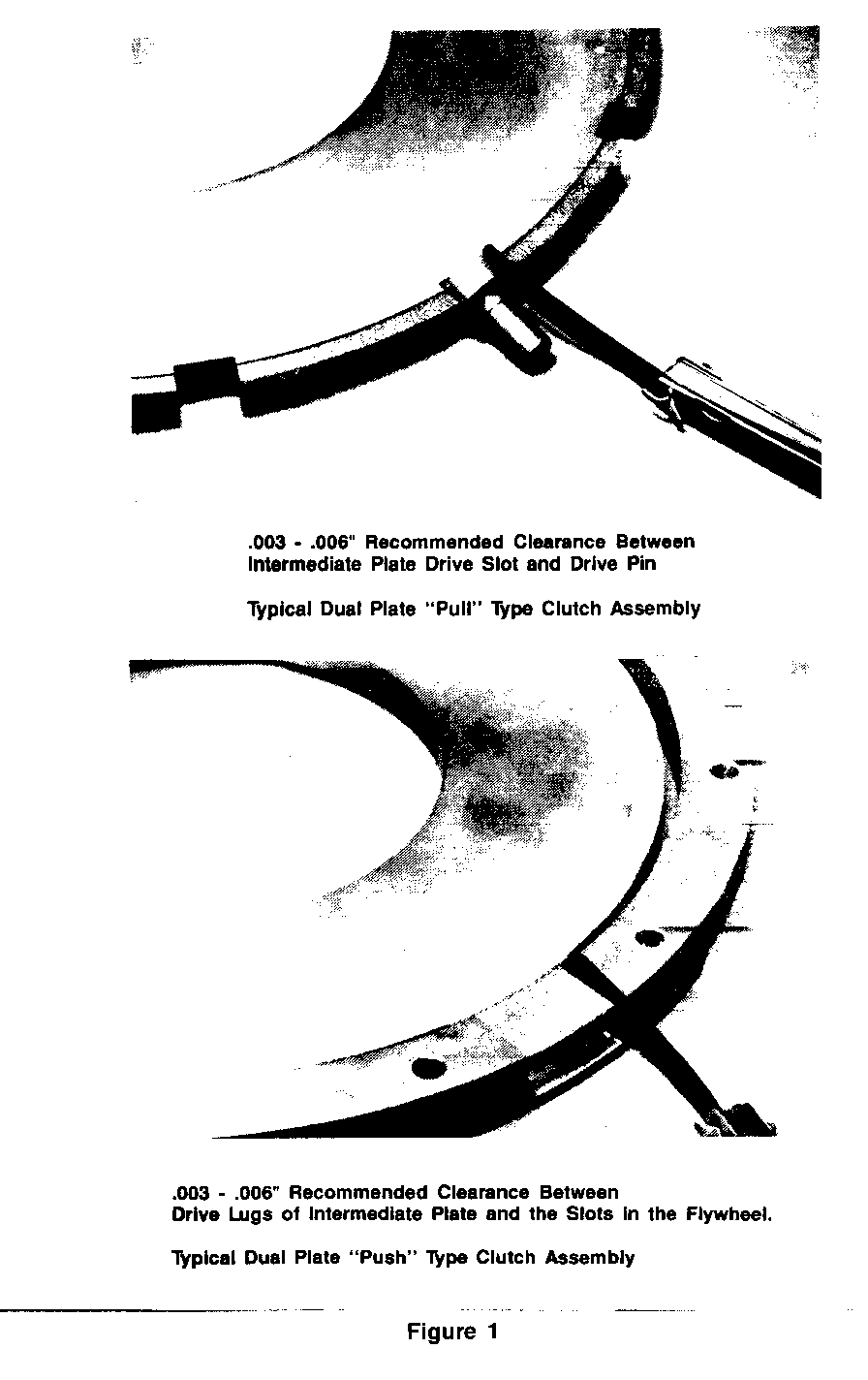INTERMEDIATE CLUTCH PLATE RATTLE NORMAL CONDITION

SUBJECT-INTERMEDIATE CLUTCH PLATE RATTLE
MODELS: 1985-1990 C5D, C6D AND C7D MEDIUM DUTY TRUCKS EQUIPPED WITH LIPE DUAL PLATE CLUTCH ASSEMBLIES
Intermediate plate rattle is considered a normal condition inherent to the design of Lipe two-plate clutch assemblies. Below is a brief description of how a Lipe two-plate clutch operates and an explanation of why the intermediate plate may rattle when the clutch is completely disengaged.
The purpose of a dual plate clutch assembly is to increase the torque capability of the clutch. For example: A 14 inch clutch cover that has 3200 pounds of plate force and is used with one disc has a torque capacity of approximately 450 foot pounds. The same 3200 pound plate force cover when used with two clutch discs has a torque capacity of approximately 900 foot pounds.
The intermediate plate acts like a flywheel to the rear (pressure plate) disc, at the same time the intermediate plate acts like a pressure plate to the forward (flywheel) disc. When the clutch is engaged (clutch pedal raised) the pressure plate moves forward clamping the rear disc against the intermediate plate, the intermediate plate continues forward clamping the front disc against the flywheel.
When the clutch is disengaged (clutch pedal pushed down), the reverse occurs. The pressure plate starts to retract into the clutch cover decreasing the clamp load on the rear disc. The rear disc starts moving rearward (toward the transmission) decreasing the clamp load on the intermediate plate. The intermediate plate starts to move rearward decreasing the clamp load on the forward disc and finally the forward disc moves rearward away from the flywheel causing complete clutch disengagement. The intermediate plate and the clutch discs MUST be able to move back and forth freely or the clutch will not release properly.
In order for the intermediate plate to move back and forth freely, a clearance needs to exist between the drive lugs of the intermediate plate and the slots in the flywheel (or clearance between the intermediate plate drive slot and the drive pins depending on the type of clutch). The recommended clearance is .003"-.006" PER SIDE (Figure 1).
This clearance is required to insure mating components move freely. With this clearance, some intermediate clutch plate rattle may be heard. This condition should be considered normal. As the flywheel and intermediate plate contact against each other and wear out, the rattling sound may become more noticeable.
During clutch replacement, it is recommended the flywheel be restored to original condition. This includes both the friction face and the drive slot of the flywheel.


General Motors bulletins are intended for use by professional technicians, not a "do-it-yourselfer". They are written to inform those technicians of conditions that may occur on some vehicles, or to provide information that could assist in the proper service of a vehicle. Properly trained technicians have the equipment, tools, safety instructions and know-how to do a job properly and safely. If a condition is described, do not assume that the bulletin applies to your vehicle, or that your vehicle will have that condition. See a General Motors dealer servicing your brand of General Motors vehicle for information on whether your vehicle may benefit from the information.
